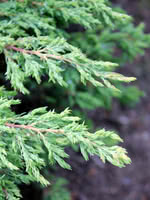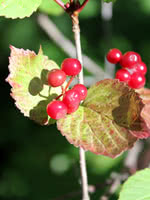Mon-Fri 9am - 5pm Mountain time
Common Juniper vs Lowbush Cranberry
Juniperus communis
Viburnum edule
NOT AVAILABLE THIS SEASON - MIGHT RETURN
NOT AVAILABLE THIS SEASON - MIGHT RETURN
Common Juniper is a wide spreading, coniferous shrub with scaly needles and small, berry-like cones. Used as a landscaping shrub, it typically grows 3 or 4 feet tall and will not spread like Creeping Juniper.
You can plant Common Juniper near building foundations or beneath larger trees to provide year-round color and texture to your yard with minimal maintenance.
Lowbush Cranberry is a short, deciduous shrub native to North America. Its white flowers bear sour but edible fruit that ripens to a brilliant red in fall. Lowbush Cranberry's small size makes it suitable for urban use; buyers will also find it useful if trying to reclaim land back to its original species or when landscaping with native species in damp conditions.

